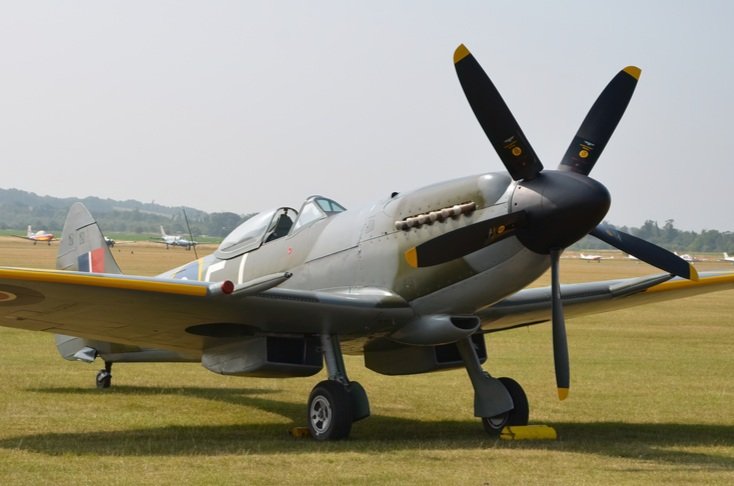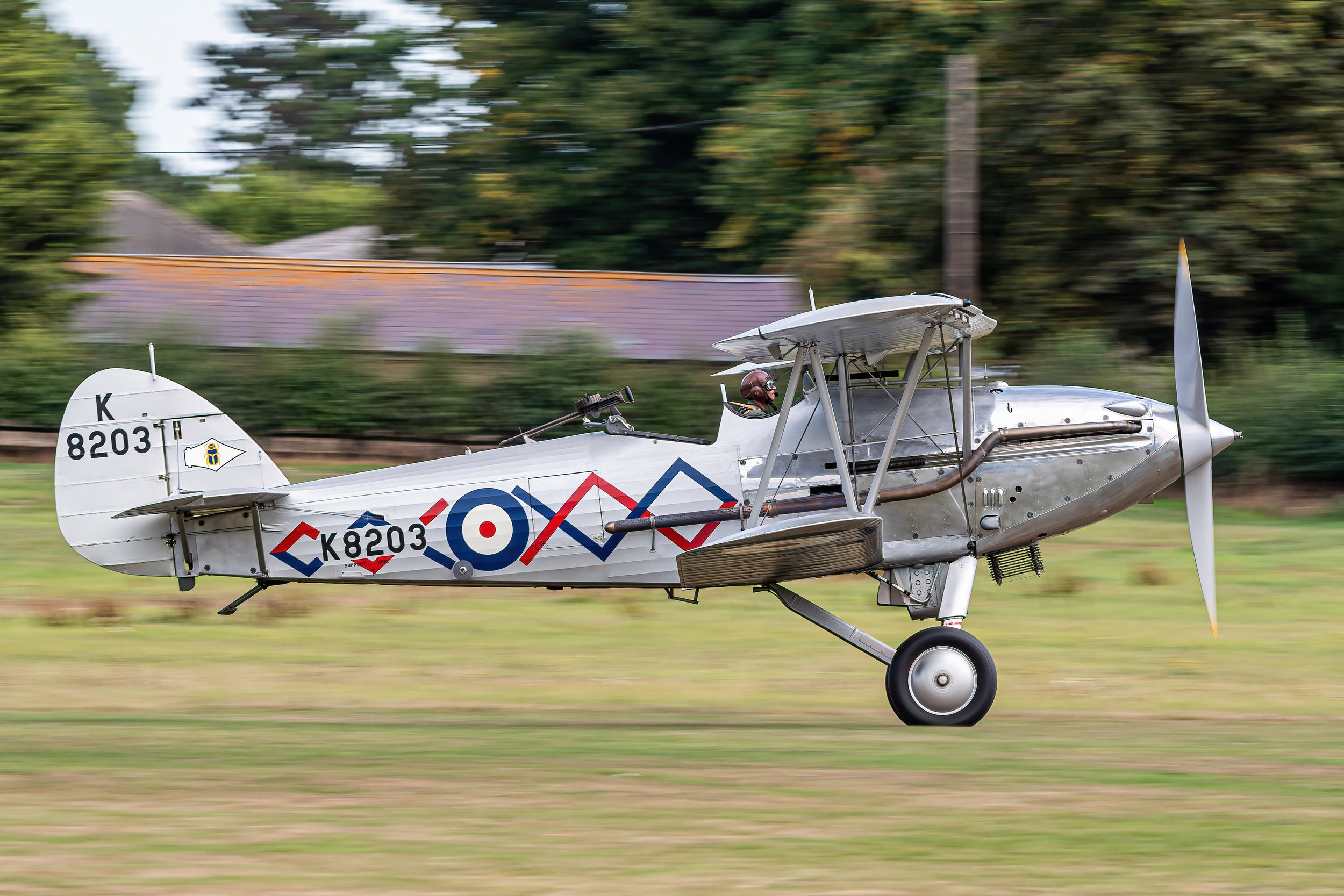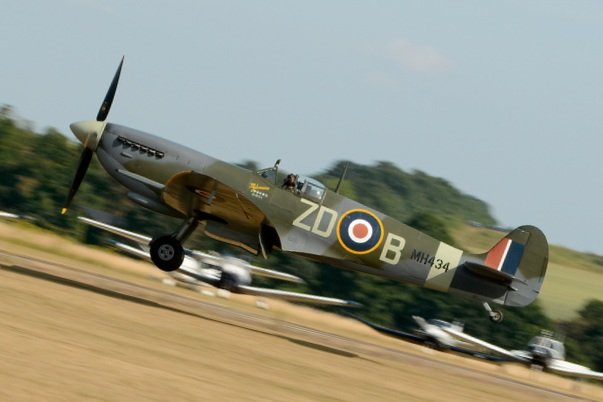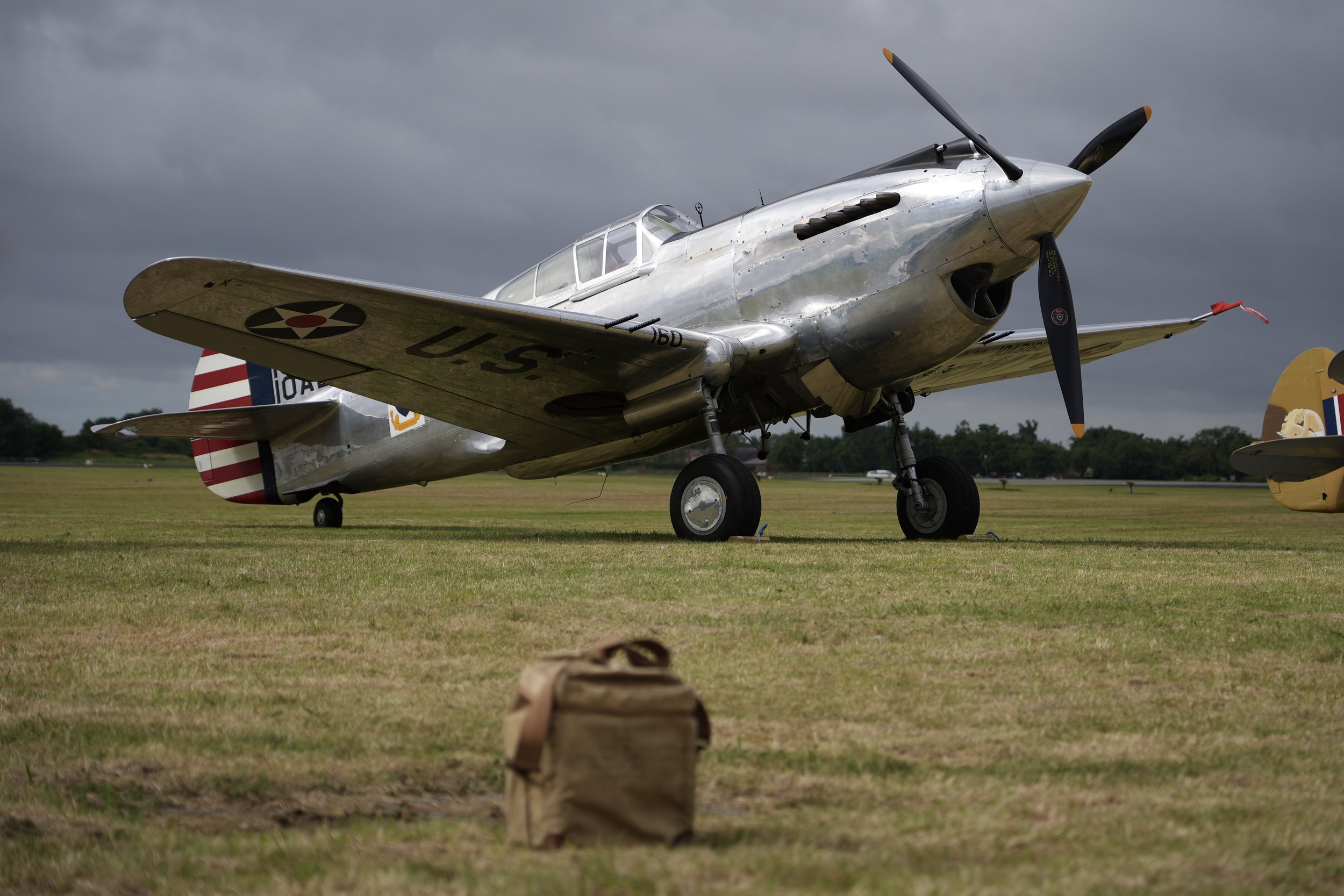Lysander G-AZWT
Year built
1938
Aircraft
Lysander IIIA
Base
Old Warden Airfield
Originally built for the RAF in 1938, Westland Lysander V9552 went to Canada in 1942 as a target tug for the RCAF. Post WWII it was sold to a Canadian collector and then, in 1971, went to the Strathallan Collection in Scotland where it was restored to flying condition by late 1979.
Grounded in 1986 it was stored, then went to Duxford in 1997 for restoration. Purchased by the Shuttleworth Veteran Aeroplane Society (SVAS), it joined the Shuttleworth Collection in 1998. It arrived painted in standard RAF camouflage with additional markings to represent No. 309 (Polish) Squadron while operating from bases in Scotland between 1940 and 1942.
In the autumn of 1999, with the aid of a donation from the family of Peter Vaughan Fowler who had flown with 161 Squadron on Lysander operations during World War II, it was repainted in black overall with the markings of his aircraft, bearing the serial V9367. A fixed ladder was installed to allow rapid access to the rear cockpit – as fitted to facilitate picking up agents; a dummy 150 gallon long range fuel tank was attached below the fuselage. In this configuration the Lysander III S.D. (Special Duties) was employed by No. 161 RAF Squadron on clandestine night flying operations from RAF Tempsford and Tangmere between 1942 and 1945.
After undercarriage repairs during 2015 the Lysander returned to airworthiness in April 2016.
| Back to Top |
Westland Lysander IIIA
The Westland Lysander is a British army co-operation and liaison aircraft produced by Westland Aircraft that was used immediately before and during the Second World War.
After becoming obsolete in the army co-operation role, the aircraft's short-field performance enabled clandestine missions using small, improvised airstrips behind enemy lines to place or recover agents, particularly in occupied France with the help of the French Resistance. Royal Air Force army co-operation aircraft were named after mythical or historical military leaders; in this case, the Spartan admiral Lysander was chosen.
In 1934 the Air Ministry issued Specification A.39/34 for an army co-operation aircraft to replace the Hawker Hector. Initially Hawker Aircraft, Avro and Bristol were invited to submit designs, but after some debate within the Ministry, a submission from Westland was invited as well. The Westland design, internally designated P. 8, was the work of Arthur Davenport under the direction of "Teddy" Petter. It was Petter's second aircraft design and he spent considerable time interviewing Royal Air Force pilots to find out what they wanted from such an aircraft. The army wanted a tactical and artillery reconnaissance aircraft to provide photographic reconnaissance and observation of artillery fire in daylight – up to about 15,000 yards (14 km) behind the enemy front. The result of Petter's pilot enquiries suggested that field of view, low-speed handling characteristics and STOL performance were the important requirements.
Davenport and Petter designed an aircraft to incorporate these features. The Lysander was to be powered by a Bristol Mercury air-cooled radial engine and had high wings and a fixed conventional landing gear mounted on an innovative inverted U square-section tube that supported wing struts at the apex and contained internal springs for the faired wheels. The large streamlined spats also contained a mounting for a Browning machine gun and fittings for removable stub wings that could carry light bombs or supply canisters. The wings had a reverse taper towards the root, which gave the impression of a bent gull wing from some angles, although the spars were straight. It had a girder type construction faired with light wood stringers to give the aerodynamic shape. The forward fuselage was a duralumin tube joined with brackets and plates, and the after the part was welded stainless steel tubes. Plates and brackets were cut from channel extrusions rather than being formed from sheet steel. The front spar and lift struts were extrusions. The wing itself was fabric covered and its thickness was greatest at the strut anchorage, similar to that of later marks of the Stinson Reliant high-winged transport monoplane.
Despite its appearance, the Lysander was aerodynamically advanced; being equipped with fully automatic wing slats and slotted flaps and a variable incidence tailplane. These refinements gave the Lysander a stalling speed of only 65 mph (105 km/h). The tube that supported the wings and wheels was the largest Elektron alloy extrusion made at the time. Due to the difficulties involved in manufacturing such a large extrusion Canadian-built machines had a conventionally fabricated assembly . The Air Ministry requested two prototypes of the P.8 and the competing Bristol Type 148, quickly selecting the Westland aircraft for production and issuing a contract in September 1936.
The high-lift devices gave the Lysander a short take off and landing (STOL) performance much appreciated by the Special Duties pilots such as Squadron Leader Hugh Verity. The wings were equipped with automatic slats which lifted away from the leading edge as the airspeed decreased towards stalling speed. These slats controlled automatic flaps. Slow speed flight was therefore greatly simplified, "and it was possible to bring a Lysander down to land, if not like a lift, at least like an escalator. The inboard slats were connected to the flaps and to an air damper in the port wing which governed the speed at which the slats operated. The outboard slats operated independently and were not connected and each was fitted with an air damper. On a normal approach, the inboard slats and the flaps would begin to open when the airspeed has dropped to about 85 mph (137 km/h) and be approximately half down at 80 mph (130 km/h). The only control that the pilot has is a locking lever which he can set to lock the flaps down once they have been lowered automatically.
| Back to Top |









| Back to Top |

































